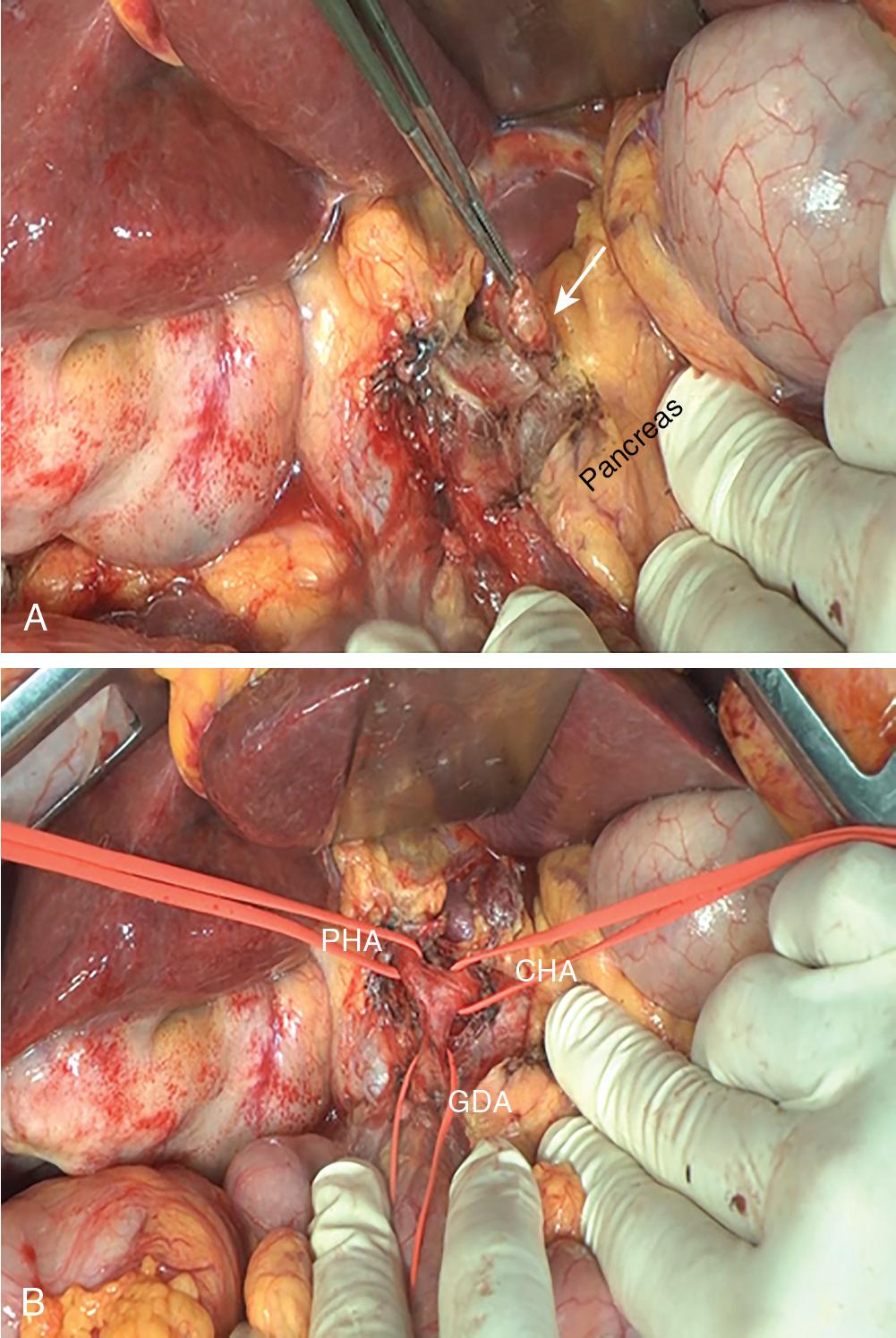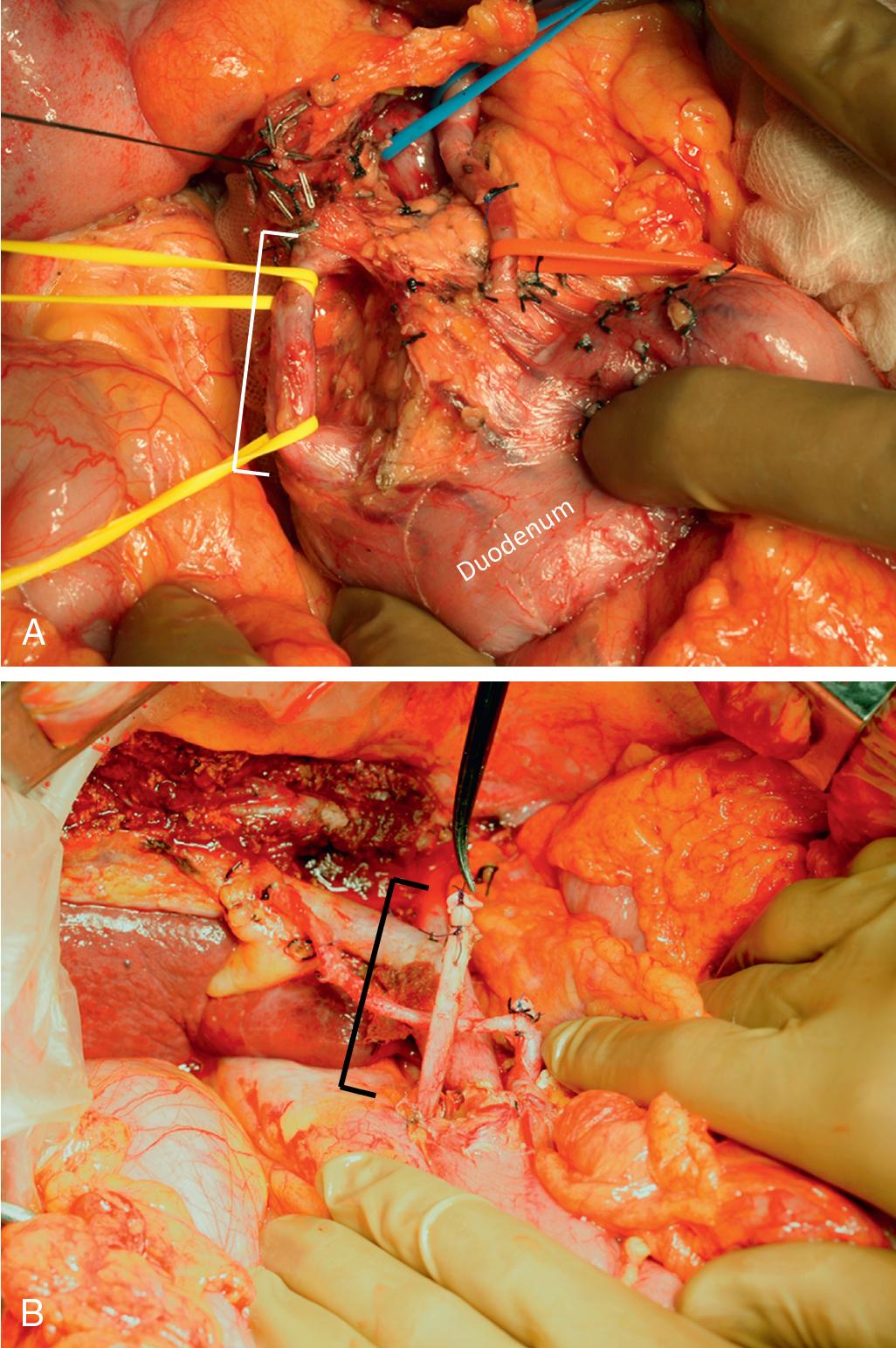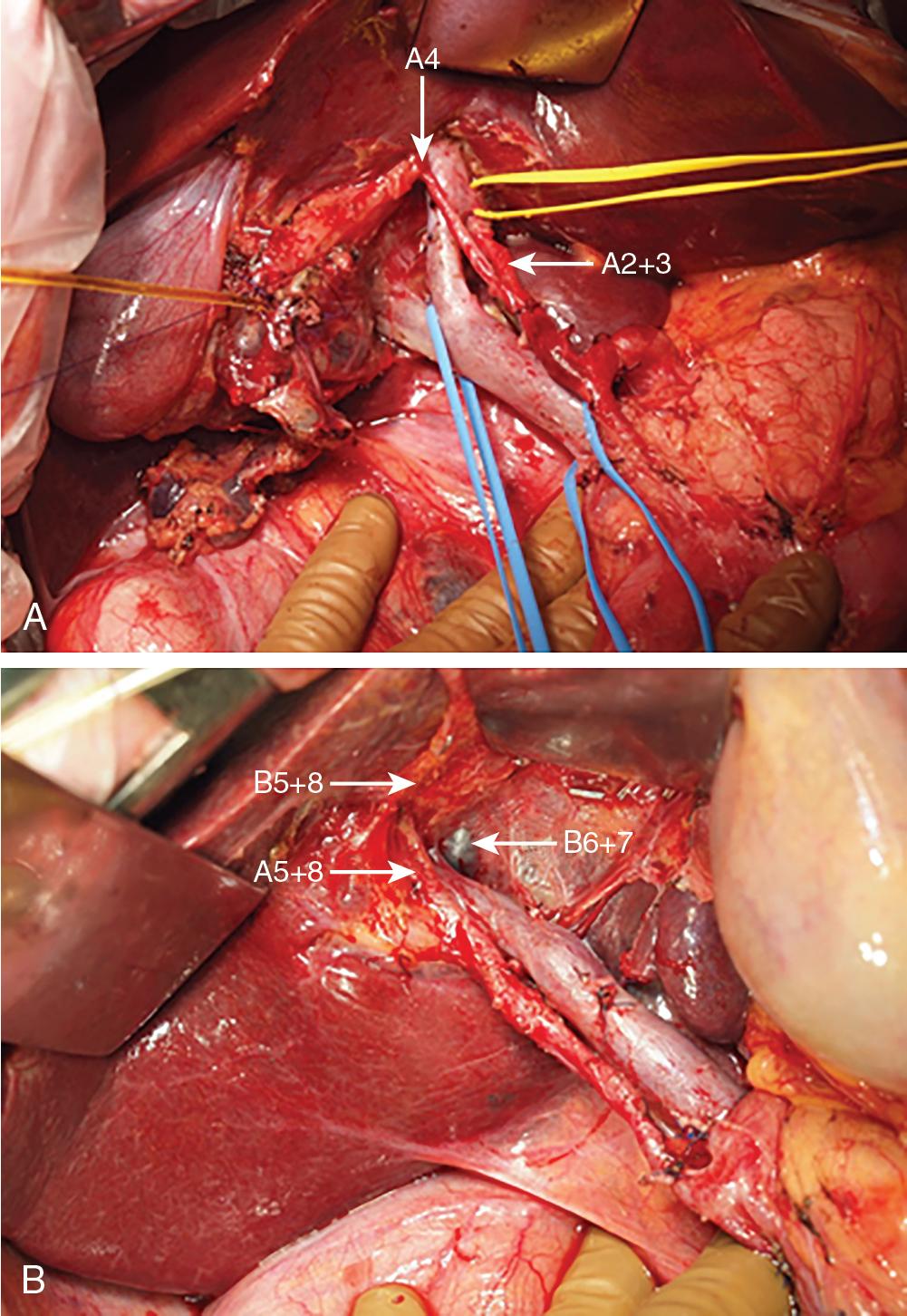Physical Address
304 North Cardinal St.
Dorchester Center, MA 02124
Perihilar cholangiocarcinoma , is a devastating disease because the majority of patients are diagnosed with advanced disease at initial presentation. At the present time, surgical resection offers the only possibility of cure for this disease, and achieving tumor-free surgical margins is one of the main goals of resection. Hilar bile duct resection with or without limited hepatectomy has been performed previously but is likely to result in positive margins, yielding unsatisfactory long-term outcomes. Recent advances in surgical techniques (see Chapters 51 and 118 ), additional understanding of tumor pathology (see Chapter 47 ), and improved presurgical management (see Chapters 25 and 26 ) have driven hepatobiliary surgeons to perform hemihepatectomy with bile duct resection as a standard procedure. In addition to standard resections, more extended procedures have been challenged to increase the resectability of the intractable malignancies in specific centers: hepatic trisectionectomy , (see Chapter 118A ), combined resection with reconstruction of the hepatic inflow vascular structures (see Chapter 122 ), and hepatectomy combined with pancreatoduodenectomy (hepatopancreatoduodenectomy [HPD]). , The rarity and variety of this disease, however, frequently preclude an accumulation of surgical expertise. This chapter particularly describes technical details not only of standard resections but also of the aforementioned extended resection procedures, introducing several anatomic variations that are possibly associated with technical difficulties during surgery.
Precise knowledge of the anatomy of the segmenta hepatis, hepatic inflow and outflow vessels, and biliary channel is crucial for a successful surgery and for avoiding inadvertent intraoperative injury of the vessels to be preserved (see Chapter 2 ). Multiplanar reformation three-dimensional images reconstructed from images taken during dynamic enhanced multidetector-row computed tomography (CT) help not only identify the ramification pattern and running course of the hepatic arteries and portal vein but also evaluate the presence or absence of vascular involvement (see Chapter 13 ). , When CT images are taken before biliary drainage in patients with obstructive jaundice, the anatomic relationship between the vasculatures and dilated biliary trees is also identifiable. The anatomic relationship among the hepatic arteries, portal veins, and bile ducts should also be precisely evaluated because the anatomy of the hilar vasculature differs from case to case.
Standard resection for perihilar cholangiocarcinoma involves either a right or a left hemihepatectomy, caudate lobectomy, bile duct resection, and lymph node dissection followed by bilioenteric anastomosis. Perihilar tumors originate either from the large bile ducts (right hepatic duct, left hepatic duct, biliary confluence, or upper bile duct) or from the hepatic parenchyma adjacent to the hilum. , The tumors frequently invade the portal structures and the bile ducts of the caudate lobe. Preoperative imaging often underestimates tumoral infiltration in the caudate lobe; therefore a caudate lobectomy is required for curative resection of perihilar cholangiocarcinomas. Standard resections are indicated for Bismuth type I, II, and III perihilar cholangiocarcinomas without macrovascular invasion, and the resection typically proceeds in the following sequence: (1) lymphadenectomy with division of the distal bile duct; (2) vascular division of the hemiliver in the hepatic hilum; (3) mobilization of the hemiliver and caudate lobe to be resected; (4) liver parenchymal transection; and (5) division of the proximal intrahepatic bile duct.
Several types of incisions are used for laparotomy, and the authors preferentially use the upper midline incision cephalad up to the xiphoid process with the right transverse incision reaching the anterior axillary line (reverse L incision). The transverse incision is extended to the left anterior axillary line (reverse T incision) in some overweight patients as an alternative approach to gain a better surgical view. After checking for intra-abdominal distant metastasis and/or peritoneal dissemination, the curve of the duodenum is mobilized by the Kocher maneuver to evaluate the periaortic lymph nodes for staging.
The main goal of this procedure is to achieve a negative margin at the distal bile duct and thorough lymph node dissection of the following regional lymph nodes: hilar, cystic, choledochal, portal, hepatic arterial, and posterior pancreaticoduodenal. A sufficient number of lymph nodes needs to be retrieved for accurate staging because recent studies have demonstrated that the number of lymph nodes examined is associated with survival, particularly for node-negative patients. The authors prefer to start regional lymphadenectomy by opening the lesser sac to display the lymph nodes cranioventral to the common hepatic artery. The lymph nodes are detached from the pancreas and flipped up cranially to expose the common hepatic artery and its bifurcation into the gastroduodenal artery and proper hepatic artery ( Fig. 119B.1 ). Retraction of the gastropancreatic fold to the left provides a better surgical view for lymph node dissection and avoids inadvertent injury of the left gastric artery. Next, the covering visceral peritoneum on the hepatoduodenal ligament is cut at the superior aspect of the duodenum, and the duodenal bulb is pulled down to isolate and cut the common bile duct (CBD) at the entry of the pancreatic head as far away from the tumor edge as possible to allow for a satisfactory ductal margin length. The stump of the CBD is closed with sutures, and the distal bile duct margin is submitted for frozen section examination. If the distal margin is positive according to the frozen section examination, additional resection of the intrapancreatic bile duct is possible ( Fig. 119B.2 ). The portal vein is identified and taped posteriorly between the dissected CBD and the proper hepatic artery that was taped beforehand. Then, the posterior pancreaticoduodenal lymph nodes are detached from the posterior surface of the duodenum and pancreas head, and several tiny vessels leading to the lymph nodes are cautiously ligated and cut. The lymph nodes dorsal to the portal vein and common hepatic artery are dissected in conjunction with the posterior pancreaticoduodenal lymph nodes. Finally, lymph node dissection around the pancreatoduodenum and the common hepatic artery is completed.


After the aforementioned lymph node dissection, the peritoneum of the hepatoduodenal ligament is opened upward to the hepatic hilum, and lymph nodes in the hepatoduodenal ligament are completely dissected. The authors prefer to cut the covering peritoneum just in front of the proper hepatic artery to facilitate isolation of the artery and its bifurcation into the right and left hepatic arteries and divide connective tissue in front of the portal vein to expose and isolate the main portal vein successively.
During right hepatectomy, the left hepatic artery (supplying segments II and III), middle hepatic artery (supplying segment IV), and left portal vein are isolated and detached from the hilar plate, and the right hepatic artery and portal vein are ligated and cut at the origin. For vascular division of the hepatic arteries, the left and middle hepatic arteries are isolated upward to the base of the umbilical fossa after dividing the right hepatic artery. The left hepatic artery commonly runs into the umbilical fossa to the left of the elbow of the left portal vein and in front of the ligamentum venosum. In contrast, the middle hepatic artery (the hepatic artery supplying segment IV) normally originates from the proper, right, or left hepatic artery and traverses the left portal vein into the umbilical fossa to the right of the elbow of the left portal vein. Small arterial branches supplying the caudate lobe that possibly originate from the left and middle hepatic artery at the hepatic hilus need to be cautiously ligated and divided.
For the portal vein, the right portal vein is cut at the bifurcation, and several small portal branches to the caudate lobe originating from the transverse portion of the left portal vein are ligated and cut cautiously. The ligamentum venosum is dissected left posteriorly to the elbow of the left portal vein, and the transverse portion of the left portal vein is fully detached from the hilar plate. Finally, division of the hilar portal vein is completed. Sufficient detachment of the middle hepatic artery and the transverse portion of the left portal vein from the hilar plate is mandatory because the future cut line of the left hepatic bile duct will be just to the right on the cranial side of the umbilical portion of the left portal vein and next to the hepatic entry of the middle hepatic artery and because the resection line of the proximal bile duct depends on the extent of these dissections at the hilum ( Fig. 119B.3 A ).

Become a Clinical Tree membership for Full access and enjoy Unlimited articles
If you are a member. Log in here